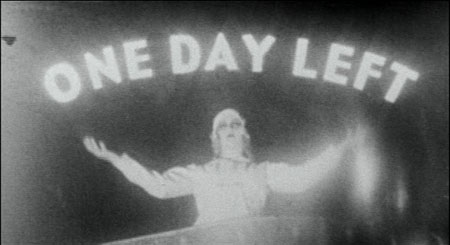Hidden deep in the recesses of early cinema lies a rarely seen, obscure gem that might be described as something resembling a Max Beckman Moving Picture.
 Roscoe Arbuckle’s 1916 He Did and He Didn’t is a humorous, expressionistic nightmare which not only calls to mind the texture and atmosphere of Max Beckman expressionist paintings, but also, in heroine Mabel Normand, evokes Edvard Munch as well.
Roscoe Arbuckle’s 1916 He Did and He Didn’t is a humorous, expressionistic nightmare which not only calls to mind the texture and atmosphere of Max Beckman expressionist paintings, but also, in heroine Mabel Normand, evokes Edvard Munch as well.
Arbuckle had been shifting away from the frantic style of the Mack Sennett factory towards more character driven comedy, and had taken over writing and directing his own films and making features long before Chaplin, Keaton and Lloyd followed suit.
He Did and He Didn’t uniquely stands out even among the later Arbuckle films, which is saying quite a bit as Arbuckle was innovative both as a performer and director. His perfectionism was well known and he might very well have earned the crown for king of multiple takes, although the gracefulness he displayed on both sides of the camera never even remotely hints at such perfectionist standards.
Arbuckle has been widely credited for influencing such artists as Charlie Chaplin, Buster Keaton, Oliver Hardy and Curly Howard. His distinct on-screen persona was normally that of a country bumpkin and ladies man.
Naturally, every great screen personality needs an equally distinct nemesis. Chaplin had Eric Campbell, Langdon had Vernon Dent, Arbuckle had his Al St. John. The two appeared together in numerous films and, later, Arbuckle directed St. John in Curses (1925) and Bridge Wives (1932). Lanky, bad teeth, bad hair and bad clothes, St. John was Arbuckle’s perfect country bumpkin foil in The Waiter’s Ball (1916), Coney Island (1917) and the recently restored Love (1919), in which Arbuckle donned drag, as he frequently did (Good Night Nurse, an imaginative nightmare fantasy with Keaton, St. John and Arbuckle Continue reading ROSCOE ARBUCKLE’S “HE DID AND HE DIDN’T” (1916)

 (episode & 1st season series)
(episode & 1st season series)


